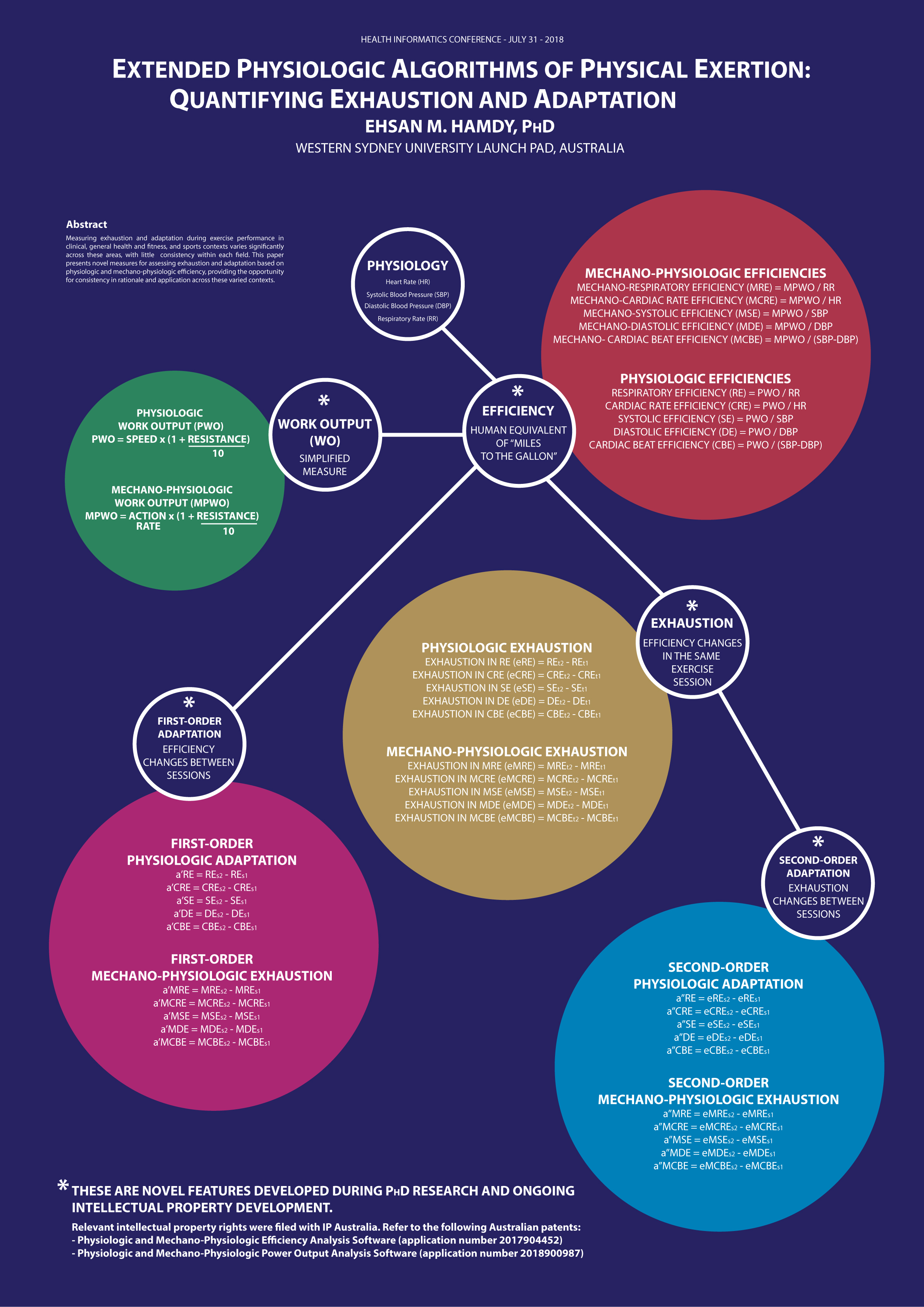Work & Study Vibes 😎
OK if I'm going to share some more geeky with you guys, I have to make up for it with the right kind of mellow, yes?
Hope you enjoy this track from the guys at Music Lab as I explain and you read on about my algorithms for calculating first-order adaptation. Here we go...
Quick Review First

Context
The PAPE Framework began as a set of simple equations to calculate work output and physiologic efficiencies, and these were included in my PhD research project starting in 2011. Once finished, the research was then extended, and further algorithms were developed. All of the framework was filed as part of patents for IP protection in a commercialisation context, but the underlying science itself is freely available online in open access format and discussed openly here. If you have missed the detailed discussion of these brief review points, they can be found in earlier Blog posts.
Work Outputs
In the figure above of the poster presentation, the green circle shows the algorithms for calculating work outputs within the PAPE Framework. As you can see, these equations use basic measures of speed, action rate and resistance/incline to derive measures that represent the level of work being done by someone during exercise. The main goal of developing and using these equations was to provide simpler alternatives, for a broad range of users, to the complex techniques that rely on expensive equipment and are usually reserved for contexts like clinical practice or in high-end sports science.
Efficiencies & Exhaustion
We also looked earlier at the equations in the red and gold circle in the above poster. These cover physiologic and mechano-physiologic exhaustion, and we discussed the importance of these novel concepts. The figure above shows that these equations relate measures of performance with physiologic observations. And in the last post on exhaustion, we saw how this was derived by comparing efficiency measures at two time points within the same exercise/training session. So, what's next?
First-Order Adaptation
This concept, represented by the algorithms in the pink circle above, looks at comparisons of efficiencies between two different exercise or training sessions. First-order adaptation basically allows us to see how a training program has (hopefully) improved the exercise performance of someone with time, by having them perform the same type of test in each session and then comparing their efficiency results. Make sense? Of course it does, you got this! But just in case I might of missed something, please feel free to let me know that something wasn't clarified and I'll gladly go over it 😉

Phew... all that geeky has made me hungry.
Time for a break, and I'll catch up with you guys soon, cool?
Stay awesome,
EMH
